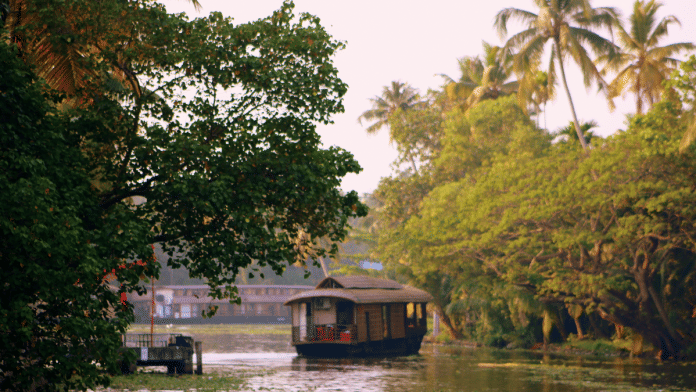Thank you dear subscribers, we are overwhelmed with your response.
Your Turn is a unique section from ThePrint featuring points of view from its subscribers. If you are a subscriber, have a point of view, please send it to us. If not, do subscribe here: https://theprint.in/
When Indians hear about “The Kerala Model”, it can raise eyebrows or instill an air of pride or even be negated as a false propaganda, depending on where you come from. Raising eyebrows is a natural instinct; from those who think that we got independence all at the same time and how they say they have done better than us. For the pride; with a malayali it’s a sense of achievement. And for the negation; it’s those who don’t fall in any of the two groups.
Some of the facts that come to my mind about Kerala: – High literacy (94%), highest life expectancy(79), lowest infant mortality (7), better health care, lower fertility rate(1.84); population is stable, decentralized governance, social justice, empowerment of women(youngest mayor;21), highest human development index(HDI), politically aware.
On the downside – Lower number of industries, higher unemployment rates, Nooku coolie etc.
Kerala had the first democratically elected communist govt in the world in 1957, elsewhere the communist got power by revolution. The social revolution started with reforms in land, education, labour and public ownership. Along with policies on services like health, transport, co-operatives etc. Followed by Congress govt in every other term. Each time the government kept on changing. People say if communism stood for socialism congress was for capitalism. But for me any party in India has to follow some tenants of socialism. Socialism is not a communist discovery, it’s a part of human nature. The good policies of Communist were followed by the Congress and vice versa. I would say it was a blend of socialism and capitalism without giving absolute power beyond five years, with only a recent (one) exception.
The change in power also gave a sense of urgency for each party to give their best each time they got power. With very few exceptions, wherever a person is allowed to rule for more than a term it has destroyed many nations. It’s not because of any ideology but it’s in the human DNA. This change in power is people’s contribution to this model.The government made investment in human capital, whereas the people kept a check on government’s powers.
As a sarcasm Keralites say that they export the very humans who are involved in the economic activities. There are almost 4 million Non resident Keralites (NRKs) working in other countries and 1 million in other Indian states. To compensate (and with the highest salary), the state has 4.5 million workers from other states, for a 35 million population.
The UN had done a study on the Kerala model; how a state with such low economic activities has the highest life expectancy and HDI, defeating their notion that only a developed nation can achieve this stat.
Perhaps this is one of the results of a model based on primary education and health care, making an individual self aware. A healthy human who can think and make decisions can use the best available options. A literate Kerala decided when the gulf opened up with the oil boom in the 70s, making them self reliant.
I think any government should educate its people and give a healthy environment, rest is the will of the people. It might take a generational cycle, but it’s for the total good. Afterall we are living with the third or the fourth generation after independence.
Kerala is one state where people seem to be richer than the government. NRKs send almost Rs 1 lakh crore every year. I hear many of the parents are sending their kids to other countries after 12th. There is a higher per capita of luxury cars, daily wage workers earn approximately Rs 1000/day where the next highest is Rs 550/day in Tamilnadu, 24% of households have one or more cars, which is the second highest in India.
But what really got me interested was the recent report that Kerala has the lowest number of poor people. I heard this as 0.55% of the population when we still have states with 50% poverty. This is the biggest achievement, where even developed nations have more poor people. I can tell at this point that the Kerala model has worked. No matter what anyone says if its citizens are above poverty, credit is due with all its governments.
The war against poverty is over in Kerala with the collective mindset, but many other frontiers are still open.
Eradicating poverty is no mean feat, whichever way it can be achieved we should adopt the best model, if humanity is taken as the only consideration.
I am not promoting any development models here, but it’s my dream to see all Indians rise above poverty. No!, not even a single person under poverty.
These pieces are being published as they have been received – they have not been edited/fact-checked by ThePrint.


